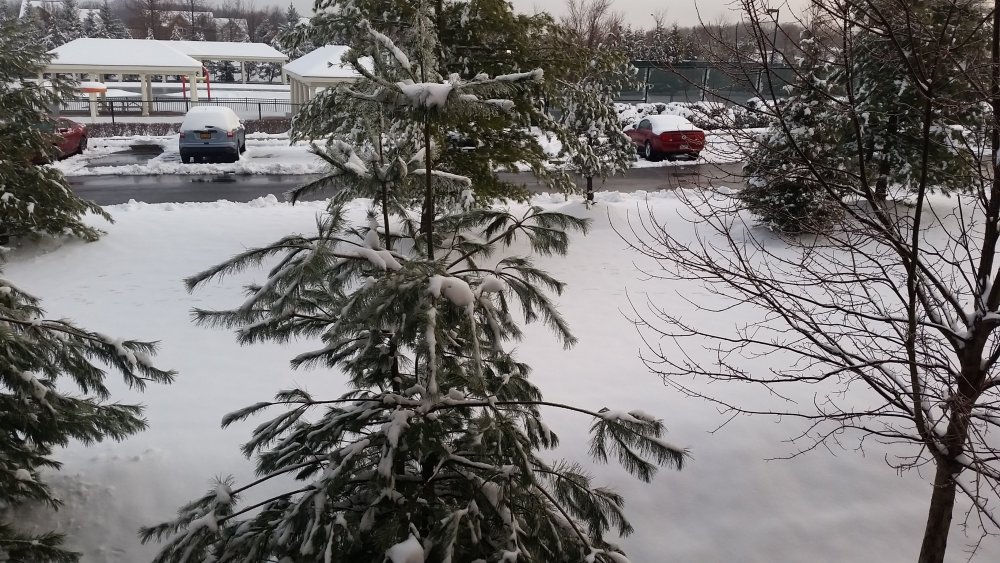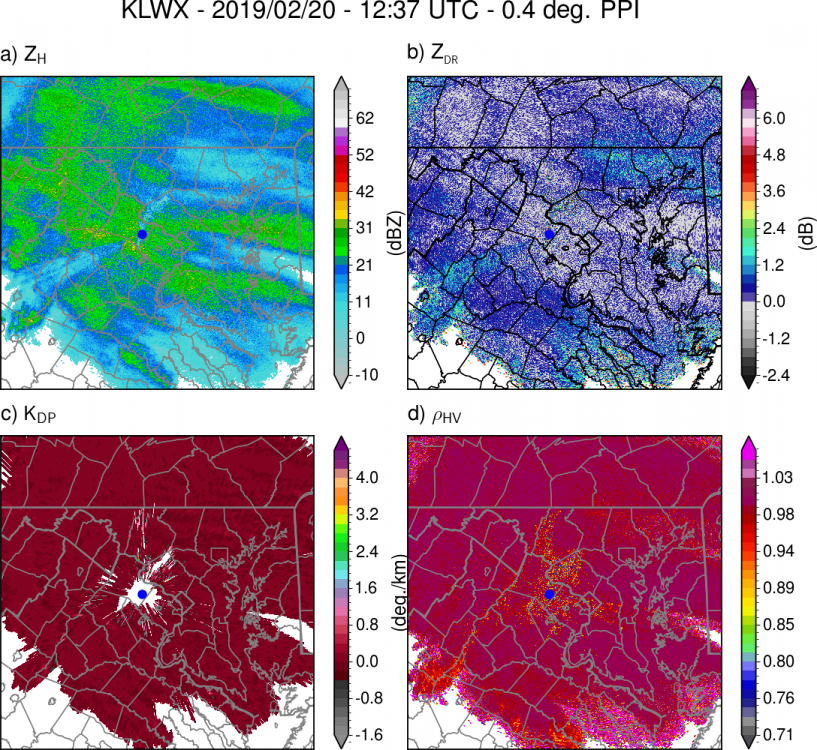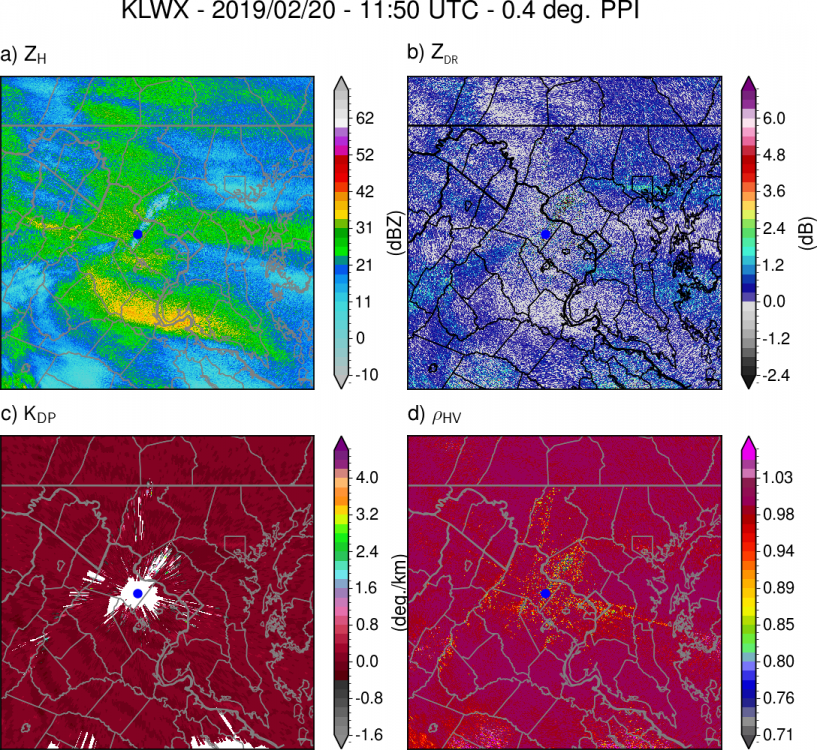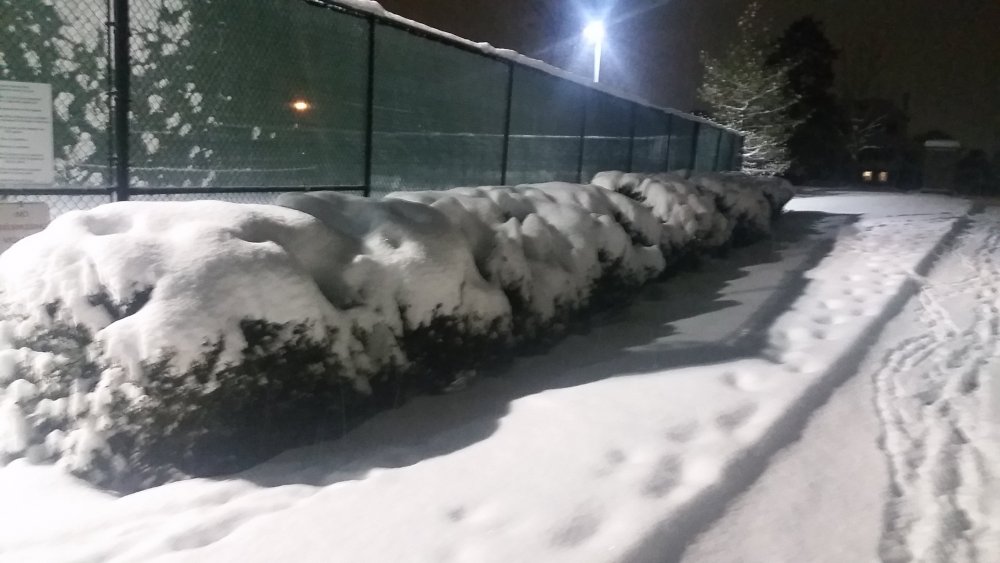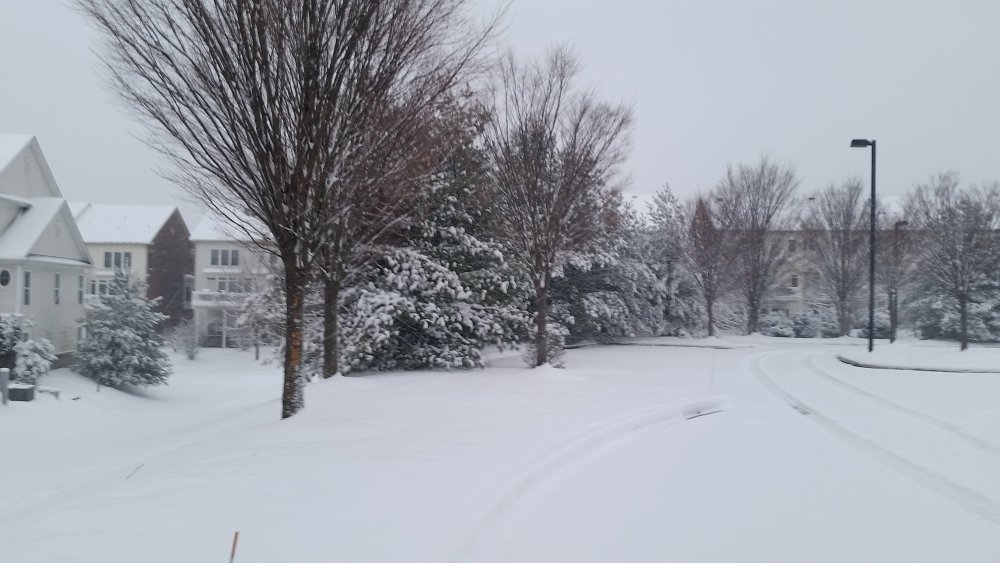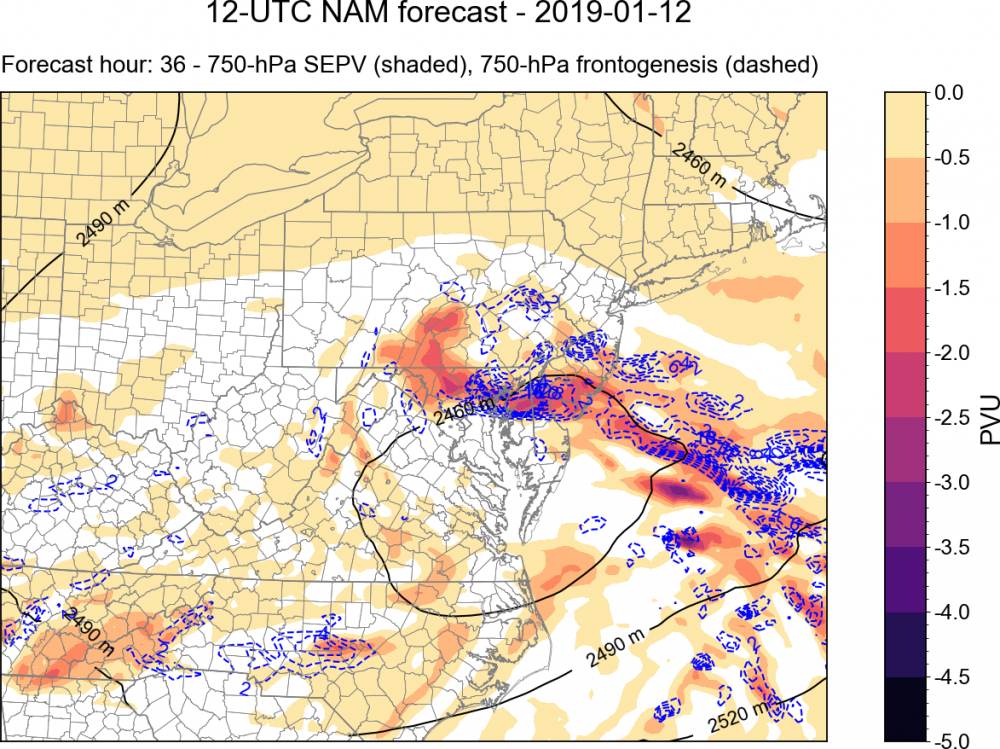-
Posts
1,619 -
Joined
-
Last visited
Content Type
Profiles
Blogs
Forums
American Weather
Media Demo
Store
Gallery
Everything posted by heavy_wx
-
Still looking wintry out this morning. I did notice a bit of ice accumulation on the tree branches here in North Laurel.
-
Precip looks to be winding down for now here; only some light sleet falling at the moment. Measured about 5" on the ground after roughly 6 hours of mostly snow.
-
Getting some very large aggregates now in North Laurel.
-
Measured about 4.5" on the ground here in North Laurel. Currently partially frozen melted aggregates and needles falling.
-
3.5" on the ground in North Laurel. Moderate snow with irregular-shaped ice particles.
-
Measured about 1.5" on the ground in North Laurel. Saw a good mix of thin columns/needles, rimed dendrites, and small/moderate-sized aggregates.
-
Yeah, bigger and fluffier aggregates starting to mix in here.
-
There are some reduced RhoHV values north and east of Albemarle County indicating sleet mixing. Still > 100 km from the LWX radar. Also, enhanced ZDR values outside of the heaviest bands indicate good ice crystal growth. Decreases in ZDR and large increases in reflectivity (ZH) in the heavier bands indicate an efficient aggregation process as the aggregates lose their horizontal alignment/extreme aspect ratios.
-
Small aggregates here, but the visibility has dropped noticeably with the enhanced reflectivity over southern Howard County. Probably some pristine ice crystals mixed in as well based on the areas of larger ZDR on radar.
-
Light snow has begun in North Laurel.
-
-
Yeah, definitely high SLR.
-
Low-density fluff falling out there. Nice aggregates composed mainly of rimed dendrites.
-
I think the snow detected by the radar is > 500 m above the ground, so with the N wind, it has moved several km south by the time it reaches the ground. I noticed this as the band approached me in North Laurel, where the precip didn't become all that intense until the center of the band was above me.
-
Getting some moderate-sized aggregates now and reduced visibility within the band of 35-40 dBZ reflectivtiy.
-
Getting a steadier light snow here on the northern edge of the band approaching Howard county. Still relatively small flakes.
-
Getting bigger aggregates now, corresponding to increased reflectivity and reduced ZDR.
-
-
Confirmed clumps of dendrites/planar crystals falling within the band of higher reflectivity here. Maybe 1-2" on the ground so far.
-
Light flurries here in North Laurel.
-
Yeah, hopefully it will be a good storm for us down here (my first). It will certainly be interesting to see how the banding sets up.
-
Just for fun, here is a good example of mesoscale banding indicated by some diagnostics of the 12z NAM. The 750 mb heights (black), frontogenesis, and saturation equivalent potential vorticity (SEPV) are plotted above. SEPV is a measure of the stability of air parcels to slantwise and/or vertical displacements in a saturated environment. Regions of negative SEPV have been associated with mesoscale precipitation bands in winter storms. You can see that there is a band of negative SEPV from east of the Delmarva to northern MD, to the north of the closed 750-mb height contour. There is also enhanced 750-mb frontogenesis in this region, associated with a thermally direct circulation (i.e., warm air rising to the south, cold air sinking north). This circulation provides lift, and in the aforementioned environment of conditional stability, leads to enhanced vertical motion within the general synoptic ascent. An important thing to note with these diagonistics is that these circulations and regions of conditional instability occur within layers of the atmosphere, and are often sloped. For example, here is the same plot but for 850 mb: You can see here that the main region of conditional instability and enhanced frontogenesis is displaced to the south over central VA and SE MD. These two levels are different horizontal slices through the same circulation; in this case the circulation is sloped to the north with height. Where this circulation intersects the dendritic growth zone (DGZ) is often where the most intense banded precipitation occurs, due to the region having the most efficient ice crystal growth and aggregation. For more information, this is one good resource: http://cstar.cestm.albany.edu/CAP_Projects/Project6/Mesoscale_Structure/seminar (M. Greenstein).ppt
-
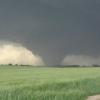
The August 21, 2017 Great American Eclipse
heavy_wx replied to ice1972's topic in Weather Forecasting and Discussion
Yeah, not a bad analogy. -

The August 21, 2017 Great American Eclipse
heavy_wx replied to ice1972's topic in Weather Forecasting and Discussion
Yeah, I was kind of planning on doing that beforehand anyway just because I had a long drive back. I probably would have stayed around a bit longer otherwise. -

The August 21, 2017 Great American Eclipse
heavy_wx replied to ice1972's topic in Weather Forecasting and Discussion
I left maybe 10 minutes after totality. Traffic was fine on I-40 east until I got to the exit ramp. All of the local roads from Tennessee into Kentucky towards I-75 were bad, and it ended up being a 5-hour drive to I-75 that takes under 3 hours without traffic. After a few miles on I-75 traffic was fine and opened up a lot once I got to I-64 east in Kentucky. That part of the trip was definitely helped by the lower populations of West Virginia, western MD, and central PA.


